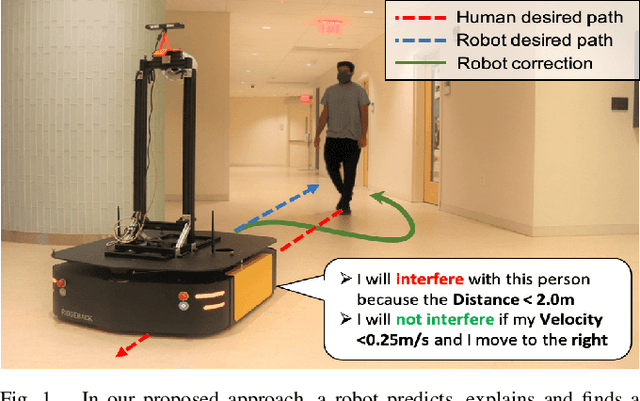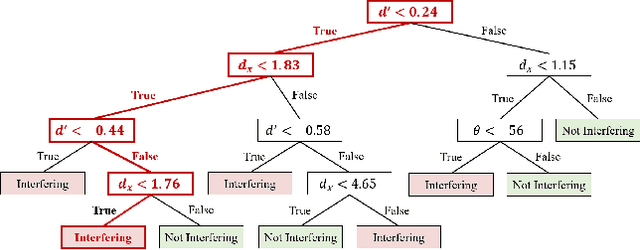Interpretable Run-Time Prediction and Planning in Co-Robotic Environments
Paper and Code
Sep 08, 2021



Mobile robots are traditionally developed to be reactive and avoid collisions with surrounding humans, often moving in unnatural ways without following social protocols, forcing people to behave very differently from human-human interaction rules. Humans, on the other hand, are seamlessly able to understand why they may interfere with surrounding humans and change their behavior based on their reasoning, resulting in smooth, intuitive avoiding behaviors. In this paper, we propose an approach for a mobile robot to avoid interfering with the desired paths of surrounding humans. We leverage a library of previously observed trajectories to design a decision-tree based interpretable monitor that: i) predicts whether the robot is interfering with surrounding humans, ii) explains what behaviors are causing either prediction, and iii) plans corrective behaviors if interference is predicted. We also propose a validation scheme to improve the predictive model at run-time. The proposed approach is validated with simulations and experiments involving an unmanned ground vehicle (UGV) performing go-to-goal operations in the presence of humans, demonstrating non-interfering behaviors and run-time learning.
 Add to Chrome
Add to Chrome Add to Firefox
Add to Firefox Add to Edge
Add to Edge